The craziest carnivals celebrated in Spain
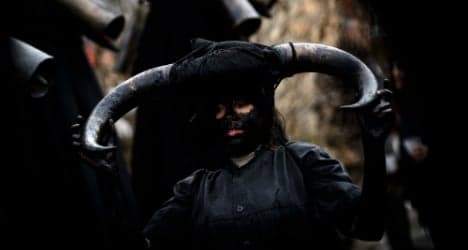
They may not have pancake day, but Spaniards know how to let their hair down before the frugality of Lent. As Carnival fever sweeps across the nation, we take a look at some of the more unusual celebrations.
In the week leading up to Lent, Spain plays host to some of the world's biggest and best carnivals. But it is the smaller carnivals, many of them with roots going back hundreds of years, which really capture the imagination. Locals take great pleasure and pride in dressing up, play fighting and letting off steam before the belt-tightening of Lent.
Los Indianos carnival, La Palma, Canary Islands
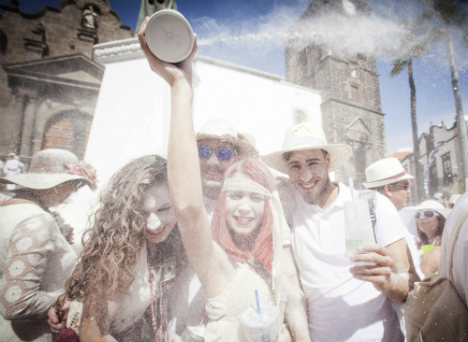
Photo: Desiree Martin/AFP
Celebrated in Santa Cruz on the Canary Island of La Palma, Los Indianos (the Indians) is just one crazy event in the over month-long carnival. Revelers traditionally wear white and throw talc over each other, a tradition that, it is said, comes from the late 19th century, when a ship pulled up to the island with a batch of spoiled flour, that locals then threw over each other in celebration of the carnival.
'Os Farrapos' carnival, Laza, near Ourense, northwestern Spain
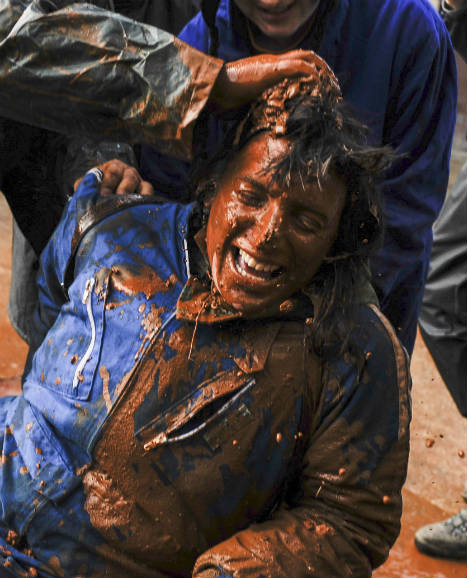
Photo: Pedro Armestre/AFP
During the 'Os Farrapos' battle of the Entroido carnival in Laza, in northern Spain, characters in outlandish costumes and grinning masks perform. The carnival also includes a battle with flour, water and live ants used as ammunition and ends with a reading of the satirical 'Donkey’s Will' and the burning of an effigy. The festive event, considered to be the most ancient and most splendid in Galicia, is not governed by civil laws or religious precepts.
The Devils of Luzon
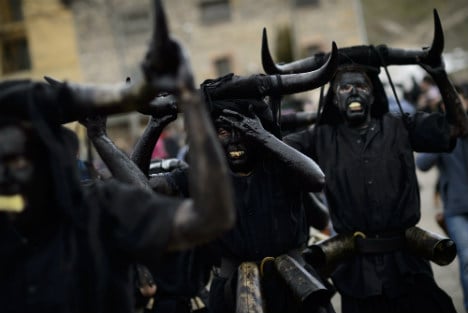
Photo: Dani Pozo/AFP
During the festival of the devils in Luzon, near Guadalajara, local men paint their faces with oil and soot, don horns and cow bells to transform into devils. Records show the carnival dates back to the 14th century.
Carnival of Carrizo de la Ribera, Leon
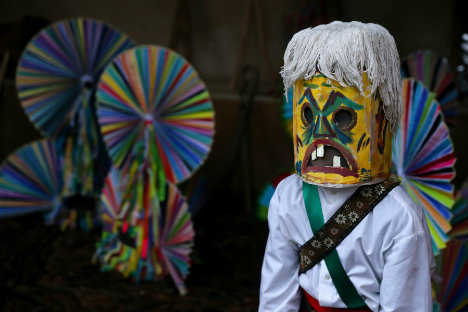
Photo: Cesar Manso/AFP
Another carnival with cowbells, this time, locals dress up as characters called 'antruejos' (shown in picture, above), terrifying looking figures that you definitely wouldn't want to meet on a dark night.
Santa Cruz carnival, Tenerife
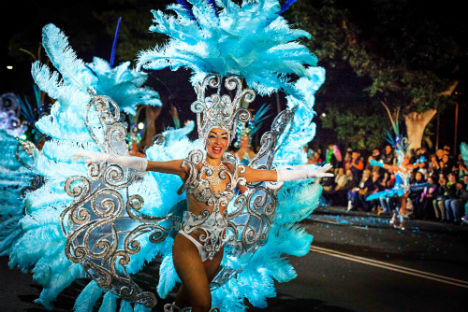
Photo: Desiree Martin/AFP
The famous street parade during the Santa Cruz carnival was more glitzy than ever this year. The festival, which runs from January 21st until March 8th includes street parties, the crowning of carnival queen and satirical street bands.
Comments
See Also
In the week leading up to Lent, Spain plays host to some of the world's biggest and best carnivals. But it is the smaller carnivals, many of them with roots going back hundreds of years, which really capture the imagination. Locals take great pleasure and pride in dressing up, play fighting and letting off steam before the belt-tightening of Lent.
Los Indianos carnival, La Palma, Canary Islands

Photo: Desiree Martin/AFP
Celebrated in Santa Cruz on the Canary Island of La Palma, Los Indianos (the Indians) is just one crazy event in the over month-long carnival. Revelers traditionally wear white and throw talc over each other, a tradition that, it is said, comes from the late 19th century, when a ship pulled up to the island with a batch of spoiled flour, that locals then threw over each other in celebration of the carnival.
'Os Farrapos' carnival, Laza, near Ourense, northwestern Spain

Photo: Pedro Armestre/AFP
During the 'Os Farrapos' battle of the Entroido carnival in Laza, in northern Spain, characters in outlandish costumes and grinning masks perform. The carnival also includes a battle with flour, water and live ants used as ammunition and ends with a reading of the satirical 'Donkey’s Will' and the burning of an effigy. The festive event, considered to be the most ancient and most splendid in Galicia, is not governed by civil laws or religious precepts.
The Devils of Luzon

Photo: Dani Pozo/AFP
During the festival of the devils in Luzon, near Guadalajara, local men paint their faces with oil and soot, don horns and cow bells to transform into devils. Records show the carnival dates back to the 14th century.
Carnival of Carrizo de la Ribera, Leon

Photo: Cesar Manso/AFP
Another carnival with cowbells, this time, locals dress up as characters called 'antruejos' (shown in picture, above), terrifying looking figures that you definitely wouldn't want to meet on a dark night.
Santa Cruz carnival, Tenerife

Photo: Desiree Martin/AFP
The famous street parade during the Santa Cruz carnival was more glitzy than ever this year. The festival, which runs from January 21st until March 8th includes street parties, the crowning of carnival queen and satirical street bands.
Join the conversation in our comments section below. Share your own views and experience and if you have a question or suggestion for our journalists then email us at [email protected].
Please keep comments civil, constructive and on topic – and make sure to read our terms of use before getting involved.
Please log in here to leave a comment.